Dr. Jekyll and Mr. Hyde (1931)
Rayting:
7.7/
10 12.7K votes
Language: English
Release date: 3 January 1932
Dr. Jekyll faces horrible consequences when he lets his dark side run wild with a potion that transforms him into the animalistic Mr. Hyde.
Similar Movies
7.4
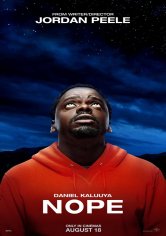
Nope 2022
6.7
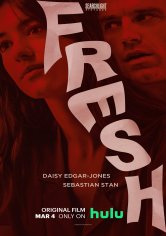
Fresh 2022
6.6
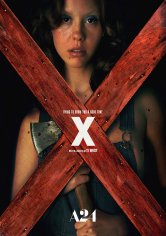
X 2022
5.2
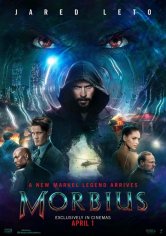
Morbius 2022
5.9

Crimes of the Future 2022
4.7
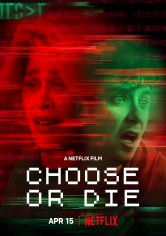
Choose or Die 2022
6.1
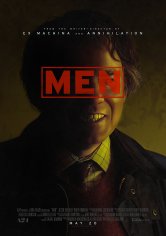
Men 2022
5.7
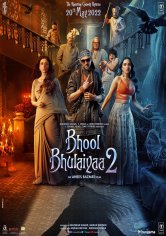
Bhool Bhulaiyaa 2 2022
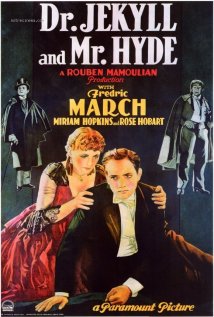

User Reviews
This is viewed by many to be the best cinematic re-telling of Stevenson's original work, which is a tad odd as very little of the novella remains. The concept of the duality of human nature is still present in March's Dr Jekyll/Hyde, but a whole lot of sex and daring visual effects have been added to Stevenson's controversial Victorian work. The result? An excellent and entertaining film that will stay in the mind for quite some time.
Fredric March, one of the best actors of all time, won the Academy Award for playing the dual roles. It's not hard to see why- March is excellent in this one, and plays both Jekyll and Hyde with enthusiasm and vigour. It's a very theatrical performance by today's standards. but what a fun performance it is! March shows his incredible acting range here.
March's Jekyll is a repressed Victorian doctor who is interested in both separating the two sides of human nature- 'good' and 'evil'- from each other, and quickly marrying his rich fiancé Muriel Carew (Rose Hobart). A slight hitch in his plans- Muriel's father insists that the two lovers must wait eight months before they are married, so they can wed on the anniversary of his own wedding. It's a rather laughable concept actually, but it serves it's purpose as the pre-cursor to March's wild rampage as Hyde. It seems the primary reason Jekyll wants to marry Muriel is to bed her, and when he can't do that, he takes a concoction of drugs and turns into the simian, sexually uninhibited Hyde.
March's make-up almost destroyed his wonderful looks forever, so it deserves a mention here. Looking at through today's CGI-trained eyes, March's Hyde is ridiculously overdone and more comical than scary. Tracy's 1941 Hyde is a much subtler figure, which suits the narrative better in some ways. However, Mamoulian effectively conveys to the audience in his version that Hyde is having a lot of fun, is liberated in his personal and sexual freedom, hence the 'comical' aspects. March, amazing in both comedy and drama, plays him at first like a free-wheeling puppy, eager for discovery, than as a real monster as he degenerates both in appearance and behaviour. The simian make-up suits the notion of Hyde being 'semi-evolved' in nature, so it all works out in the end.
Miriam Hopkins is the Cockney slut Ivy who Jekyll good-naturedly attends to at first, then brutalizes her as Hyde. March's first encounter as Jekyll with Hopkin's Hyde is a erotically-charged, provocative affair. Jekyll's primal instincts and his need to unleash them, quickly, are displayed in his overt sexual interest in Ivy. She's a girl who knows the value of sex, too, as she sexily strips for him after he makes a suggestive comment that her garter is perhaps too tight. For those interested in film history, take note of these powerful scenes between March and Hopkins- they would help bring on the Production Code in a couple of years. A sexually aroused Jekyll is grabbed and kissed by an explicit Ivy while she lies visibly naked in bed, something that would be absolutely banished from films in just a few years.
Hopkins turns in an excellent performance in this one, very convincing as the 'Tart With A Heart' Ivy. She's a brazen, sexual creature, complete with brassy blonde hair and cleavage, yet she's also sympathetic . Her situation with Hyde (where she is 'kept' by him) is borne as much out of economic necessity as it is out of total fea
Fmovies: While the titles "Frankenstein" and "Dracula" are the most popular surefire contenders for the most revolutionary horror film of 1931, I would strongly argue that the adaptation of Robert Louis Stevenson's story "Dr. Jekyll and Mr. Hyde" is another title to be considered. This film is not only significant in the fact that it's one of only two movies for there to be a tie between two actors in receiving the Academy Award for Best Leading Actor, but it's revolutionary in its visual effects and Fredric March's portrayal of a ferocious two-sided madman and the effect he has on the people around him as he jumps between sides.
It's because of this film that many are familiar with the story of Jekyll and Hyde. And why shouldn't it be? The film uses the original Stevenson story only for inspiration and foundation and instead uses its own imagination to create something new and yet surprisingly powerful in its entertainment. Is it scary? No. Not by today's standards anyway. But is it haunting? Yes. It haunts you in the same way that Count Orlok haunted you in "Nosferatu" (1922). The vampire didn't scare you in that film. But the image of a tall, pale rodent-like humanoid stalking about a castle hall after a petrified protagonist lingers on in your memory. As does the memory of Fredric March as she transforms from a handsome young scientist into an ape-like monster that begins to hound and possess a helpless young woman played with great enthusiasm and energy by Miriam Hopkins, most of whose performance had to be cut from the film due to censorship and therefore cost her the possibility of receiving an Academy Award nomination. Fredric March is equally brilliant as Jekyll and Hyde. The film also stars Rose Hobart as Jekyll's fiancée, Halliwell Hobbes as her suspicious father, Edgar Norton as the comical, stammering butler and Holmes Herbert in the one role that I think should have been developed a little more for the character does have impact in the last third of the story.
Now I saw this film after I saw the 1941 remake with Spencer Tracy and for those not familiar with that film, let me just warn you to see this movie first. The remake follows the same story almost as if it were by the book and recreates a lot of scenes, but it does not deliver the same impact even though Tracy is almost as great as March in this film. It's only half the movie that this truly entertaining 1931 horror opus is.
As this film demonstrates, director Rouben Mamoulian (Applause (1929)) and cinematographer Karl Struss (Sunrise (1927)) were two of the great innovators in renewing the role of the camera for the talkies. Lesser talents began the talkies much the same as silent films began: with a static camera. The sound is still creaky, as usual, with awkward silences, but it's not bothersome. The editing isn't always seamless here, either, and, at times, makes the film seem unpolished, but that, too, is minor. This is the best version of Robert Louis Stevenson's novella "The Strange Case of Dr. Jekyll and Mr. Hyde", in my opinion, and that has very little to do with the actual story adaptation, which comes more from the stage, anyhow. It's the role of the camera that's remarkable.
I don't mean to say that this adaptation is of little interest; it's especially interesting when compared to the novella and its other adaptations. The 1920-John Barrymore version features a more grotesque Hyde and a stiffer Jekyll. Here, Jekyll is, at first, full of gaiety and youthful exuberance. That's more faithful to the novel, but also reflects the filmmakers' intentions and the changes in Hollywood. The 1920 film was bolder in content in some respects; it was a mood piece of horror and atmosphere. The fogy lamp-lit slums of London are still realized vividly in this one, but much of the feeling in them is lost. On the other hand, the mirror motif comes out more here, which corresponds nicely with the doppelgänger (or doubles) theme inherent in the story. This 1931 film is of the classic Hollywood era. The added emphasis on the romance between Jekyll and Muriel is a result. This version is about more than the story, though; the major focus is in the camera-work.
The film begins with about three and half minutes of long point-of-view takes, with a mobile camera, from the perspective of Dr. Jekyll. It establishes the camera as an active participant in the film, rather than merely a static recorder. Throughout the picture, the camera continually moves--from slight zooms, dollies, pans and tilts to dance-like tracking shots during the party sequence. Additionally, some extreme close-ups show only a character's eyes. A POV shot during Jekyll's first transition into Hyde turns into spinning memories, which is in addition to the special effects that allow for transformations that are seen with fluent, unbroken rhythm from the camera's eye.
The camera positioning is varied, as well, and some shots are extraordinary just in their positions. The photography exploits the sets to greater effect occasionally, and the filmmakers position props with the camera especially well and in rather thematic ways that apply to the story. Yet, the photography is most brilliant when not subject to much scene dissection: long takes that are unbroken and add more fluency to the already tight plot.
One could say this is showy film-making; even the transitional effects seem to draw attention to themselves: lengthy dissolves that linger as superimposed images (such as the image of Ivy's legs over the image of Jekyll and Dr. Lanyon's debate) and wipes that create brief split-screen shots. But, the camera is the most essential part of film-making (along with editing), and it seems negligent to subject it to a role of impotence--to just recording an enacted play. This 1931 "Dr. Jekyll and Mr. Hyde" is a cinematic artwork and shows what film should be concerning the role of its most basic ap
Dr. Jekyll and Mr. Hyde fmovies. Dr. Jekyll and Mr. Hyde is Paramount doing Universal better than Universal did themselves. While this was a cash-in on the genre success of the smaller studio, if all bandwagons were this well made then cinema would be a much richer experience.
Oh, it's dated of course. A form of stiff melodrama where women still said things like "Darling... I wish this moment would last forever" and men replied "Oh, I love you... be near me always." And I love how the camera coyly veers away during the kissing scene. An odd dialogue gem is Dr.Jekyll (Frederic March) proclaiming: "We'll be so gloriously happy that even the French will be jealous of us." Look out too for Edgar Norton as Poole, offering advice to Jekyll when told his fiancée will be away for a month. "I beg your pardon, sir," he says, "but may I suggest that you ought to amuse yourself?" Yes, the dialogue is overblown, but in a wonderful, glorious way. Like a great stream-of-consciousness from the pen of a man who sees screen realism as just a petty distraction.
But what really works is the innovation of the film, almost dripping off the celluloid. I don't know if those wipes from scene to scene, the fades and the first-person perspective were originated here, but they're used superbly nonetheless. Often the frame hesitates between wipes, carving the illusion that so much is going on simultaneously that one screen cannot house it all. And the single take transformation (As Hyde says, "What you are about to see is a secret you are sworn not to reveal" – it's tinted lens effects were kept hidden for many years) is absolutely magnificent, even 70 years on.
Every single shot is worked out with a mind to an unusual angle, or a unique way of framing things, but never so that it's showy. Often the main action will be taken via longshot, the camera choosing to focus on a sole candelabrum in the foreground while the scene plays out. It's subtexts of bare backs; cleavages, thighs and garter belts are also quite racy for the time. Look how even when Jekyll has left Ivy behind, her seductively rocking leg is merged with the next scene for nearly half a minute to indicate temptation is lingering in his mind. Outstanding.
The sets, too, are unparalleled, street settings often running to several levels and making a mockery of the rival studio's sub-realist fare. The outdoor segments set to rain are exquisite, and look out for an amusing scene – the first between Miriam Hopkins and Hyde – where they engage in an accidental spitting competition. As he says the phrase "pig sty" an unintentional (?) spray of saliva coats his co-star, while a large globule of phlegm hits him in return as she says "Buckingham Palace."
Weirdly, the Doctor's name is pronounced "Gee-kul", not the commonly held "Jek-ull". I've always thought Jekyll seemed a creepier name than the passive-sounding Hyde. Maybe that's the point, and the duality of such a concept is passed forward by many shots of Hyde seeing his face via a mirror. March is not without the wit to add humour to his other persona (who resembles more Dick Emery's comedy Vicar than anything truly horrific), and is in equal terms expert in both pathos and menace. His physicality in the role also cannot be overlooked. Not only that, but you get the real feeling that you're joining March on a discovery; with each new turn of plot as much a surprise to him as it is to us. Th
A neglected masterpiece. When I picked up the two sided DVD I was excited because the Fleming/Tracy version is on the order of a guilty pleasure. But I soon realized that I had never seen the 1931 version. This is a film that lingers in the memories of many film goers as still photographs of Frederic March in his makeup. Watching it was a revelation. The same changes to original content - Jekyl's bride-to-be and her family - continue to wear wearily on the production, but nothing could prepare me for March's work. As often as we've seen "transformations" - this one is the BEST. Then young lion director Rouben Mamouilan pulls out some dandy tricks. And the sexually charged atmosphere before the Hayes code - was well - sexy as hell. Do yourself a favor and watch it.
Robert Louis Stevenson's classic tale of split personality has been filmed before in 1920 with John Barrymore and in 1941 with Spencer Tracy, but Rouben Mamoulian's expressionist 1931 version stands head and shoulders above the rest. First of all, you have Fredric March, whose tour-de-force performance as the good-natured Jekyll and the monstrous Hyde earned him the Best Actor Oscar. Second, the camera work by Karl Struss brilliantly captures the mood of the story. And lastly, the transformation sequences set an enormous precedent for the later monster movies. It all blends together to form one of most amazing horror movies of the 1930's. Even today, it still has the power to mesmerize and send chills down the spine of even the most hardened horror fan.